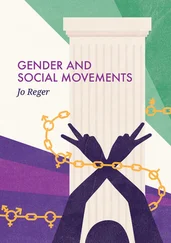In a survey as early as 1889, Bok observed that magazines have historically fulfilled the traditional mothers’ role of confidante (in Currie 1999: 41); in fact, most teenzines include advice sections, which perform this role. Eckert (2006: 364) points out that, as children approach adolescence, much of the authority exerted on them by adults (mostly parents and teachers) is replaced by “the age cohort”; by extrapolation, magazine writers seem to assume, in part, parents’ advisory role, and, thus, their messages become of utmost importance. But what is true is that adolescent readers seem to willingly accept this kind of authority from magazine writers, while tending to reject parents’ and teachers’ control. What, then, makes adolescents not to feel controlled or bossed around by magazine publishers as they do when parents or teachers try to impose their rules or principles? According to Currie (1999: 41), girls’ magazines, from their inception, adopted a personal form of address, since textual messages targeted the intimacy of readers’ lives. The present study argues that, although power exerted via the directive function is pervasive in teenzines’ discourse, the linguistic realization of the speech acts that fulfil this function is redressed with in-group markers, which can be considered a form of positive politeness strategy; thus, advice writers adopt a friendly tone that helps them gain the reader’s trust, becoming her confidantes.
Teenzines are almost exclusively read by girls, regardless of their cultural background (Currie 1999, Plaza Sánchez 2009). This is demonstrated in the amount of magazines for girls published, as opposed to those directed to boys, as pointed out in a report published in 2004 ( Tweens, Teens, and Magazines ) by the Henry J. Kaiser Family Foundation, a non-profit American foundation. This study mentions the difference in themes addressed in magazines for girls and for boys: beauty, cosmetics, people, and relationships in female magazines versus electronic gaming, sports, music, cars and other hobbies for boys, assertions which are in line with other studies. For instance, Signorelli (1997: 28) claims that the articles she studied (a total of 378 in four issues of the four leading teen girl magazines, Sassy, Teen, YM and Seventeen ) “typically focused on gender-stereotyped topics”. Curiously enough, themes in girls’ magazines do not differ from those found in magazines for female adults and, likewise, perpetuate traditional roles (Cabellos Castilla and Díez Prados 2000).
The themes in teenzines may be chosen by editors according to (presupposed) girls’ and boys’ interests, but, if that dichotomy in topics is cemented, the social distance between the sexes is also encouraged, which, in turn, is an obvious manifestation of gender enforcement. Why couldn’t teenzines for girls include articles on electronic games, or on different sources of entertainment, such as in boys’ magazines? Aren’t girls interested in those free-time activities? And, why not dealing with personal relations and physical appearance in magazines for boys? Wouldn’t that help overcome the stereotype that men don’t cry and are not concerned with their looks? Media would certainly be “the avantgarde of cultural and social change” (Kruse, Weimer and Wagner 1988: 261) if they contributed to the achievement, once and for all, of emancipated women and new men by promoting a reconciliation of topics and, consequently, interests, irrespective of sex. As García Gómez (2006) points out, gender stereotypes still play a crucial role in people’s lives, and being aware of the different roles men and women are assigned can be a stepping-stone to avoid the recurrence of inflexible traditional male or female behavioural patterns. As Eckert and McConell-Ginet (2013: 9) assert: “With differential treatment, boys and girls do learn to be [emphasis in the original] different”.
All in all, the aforementioned studies on the topic seem to obtain the same results: girls’ magazines hold a stagnant ideological stance, since they defend traditional sexist roles. Likewise, García Gómez (2009: 627), in his study on the construction of identity by Spanish and British teenagers in weblog writing, observed that bloggers use discursive strategies that present them as “subservient to or subsumed into the loved one when romance is blossoming”; contrariwise, when romance fails, female bloggers represent the self as powerfully rejecting their ex-boyfriends by the use of discursive strategies that remind stereotypical patterns of male language use (i.e. insults, taboos, obscene metaphors). Therefore, when in love, girls seem to adopt a submissive role towards their lovers, but react with “androgynous behaviour patterns” (García Gómez 2009: 631) when they feel rejected by their couples. However, this masculinization of girls’ reactions does not seem a step in the right direction for gender equality, but an attempt by women to switch roles with men.
3 Theoretical framework
Building upon the sociological studies aforementioned, particularly the work carried out by Currie (1999, 2001) and developing her argument that “the textual format itself facilitates the acceptance of the ‘adolescence’ constructed on magazine pages” (Currie 2001: 265), I argue that gender is enforced via directives in magazines written in English and Spanish. My intention is to develop a discursive approach to the study of how linguistic form may facilitate assimilation and acceptance of advice by female adolescents in a very vulnerable period of their lives in which they are forming their identities and are searching for their self-esteem (Saz Marín 2007: 40).
Since the main function of advice columns is to ask for and provide guidelines for a form of behaviour, these sections in magazines abound in directives, which can be defined as speech acts that speakers use to get something done by someone else: “In using a directive, the speaker attempts to make the world fit the words (via the hearer)” (Yule 1996: 54). According to Tsui (1994: 116), directives are discourse acts that expect a non-verbal action from the addressee, not giving him/her the possibility of non-fulfilment. This function can be verbalized in different ways, depending on the degree of directness: whereas the most linguistically unmarked realization of the directive function is the imperative, they can be expressed via declarative and interrogative structures, which make the realization of the function more indirect (i.e. indirect speech act) and, thus, more polite.
In politeness terms, directives are face threatening acts (Brown and Levinson 1987), since they imply an imposition by the addresser on the addressee, and, consequently, it is more socially acceptable to avoid direct imposition via a direct request (i.e. using the imperative). Choosing a more indirect way to impose something on somebody implies less risk of refusal or causing offence (Yule 1996: 57). On the other hand, the threat of the imposition will vary depending on the relationship among the participants in the interaction (their degree of friendliness) and the range of the imposition itself (whether it implies a great cost for the addressee or not). The more social distance between the speakers and the heavier the imposition, the more politeness devices should be used to utter socially accepted directives. If the degree of friendliness among the participants is high, the use of politeness devices is reduced, and more direct speech acts are acceptable. Furthermore, not all directives are equally threatening for the addressee, since some of them (e.g. suggestion, advice or invitation) are done for his/her own sake.
In fact, Tsui (1994: 119) distinguishes between two types of directives: those which demand the addressee to perform an action for the speaker’s benefit, which she calls mandatives , and those which advocate an action to be performed by the addressee for his/her own benefit, called advisives . Tsui (1994: 127-132) further subdivides mandatives into instructions and threats . Instructions demand an action complied by the addressee for the addresser’s own benefit; besides, the addresser should be a person who has the right or is sure of getting the addressee to comply. Threats , apart from not being beneficial for the speaker, explicitly state that an undesirable consequence will be brought about by the addresser if the addressee does not comply with the requested action. Advisives are also subclassified into two types (Tsui 1994: 120): advice and warnings . The former (i.e. advice) highlights the desirable consequences of complying whereas the latter (i.e. warnings) the undesirable ones of not complying.
Читать дальше












